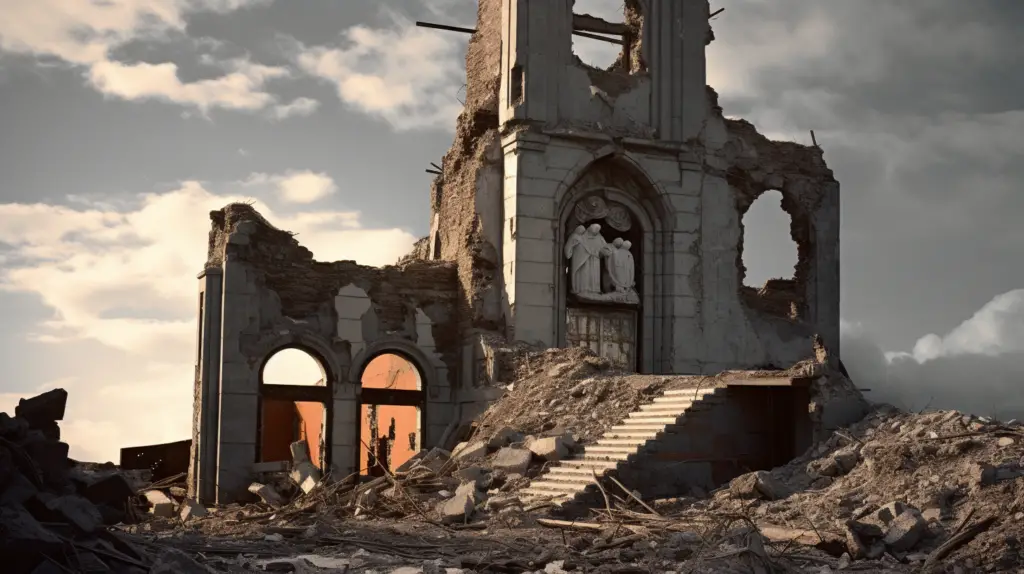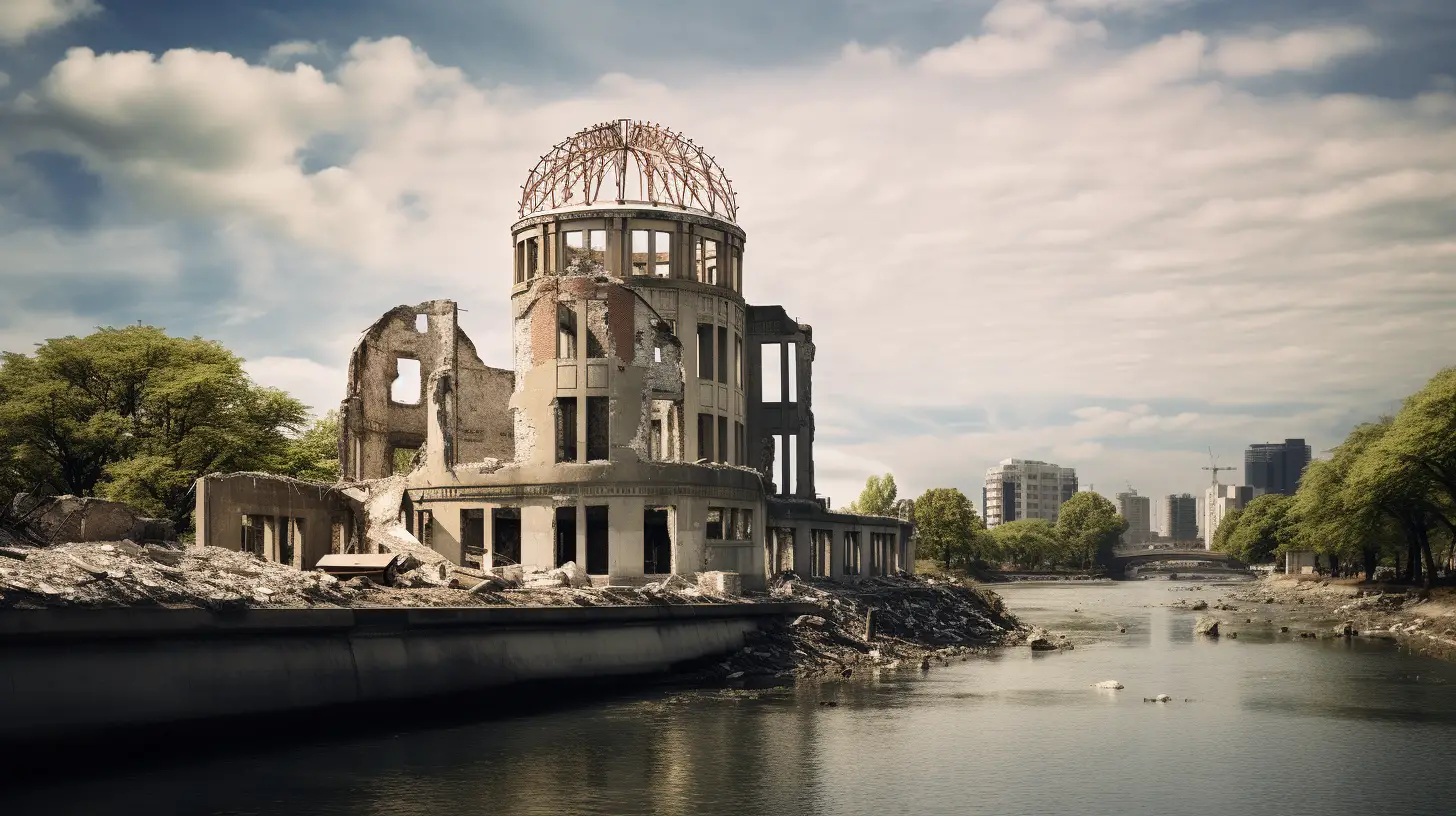Three days after the Hiroshima bombing, the United States dropped a second atomic bomb, this time on the Japanese city of Nagasaki. This bomb was even more powerful than the one used on Hiroshima. It caused a massive shockwave and subsequent fires that led to widespread destruction. It is estimated that by the end of 1945, tens of thousands of people had died as a direct result of the bombing, with many more succumbing in the following years to injuries and illnesses related to radiation exposure. This devastating event, together with the bombing of Hiroshima, accelerated Japan’s surrender, effectively concluding World War II.
In this article I will present 50 facts you need to know and understand about the atomic bomb dropped on Nagasaki.
- The atomic bombing of Nagasaki took place on August 9, 1945.
- This was the second and last atomic bombing during World War II, the first being in Hiroshima.
- The atomic bomb, called “Fat Man”, was more powerful than “Little Boy”, the bomb used in Hiroshima.
- “Fat Man” had an explosion power of approximately 21 kilotons of TNT.
- The mission was led by the United States Army Air Force .
- The bomb was dropped by a B-29 Bockscar plane.
- Initially, the city of Kokura was the primary target, but due to clouds and smoke in the city, Nagasaki was chosen.
- At the time of the bombing, Nagasaki had a population of approximately 240,000 people.
- It is estimated that between 40,000 and 80,000 people died immediately from the explosion.
- Due to radiation, the total number of deaths by the end of 1945 was approximately 140,000 Japanese.
READ MORE: 50 facts you need to know and understand about the atomic bomb dropped on Hiroshima - Despite massive destruction, some buildings survived, including the Urakami Cathedral.
- A Japanese birch tree (Hibakujumoku), located about 1.1 km from the epicenter of the explosion, survived and still exists today.
- The bomb exploded about 500 meters above the ground to maximize the destructive effect.
- The effects of radiation caused congenital malformations, leukemia, and other forms of cancer for those who survived.
- Nagasaki was a major military production center, with numerous factories and workshops.
- Despite the devastating effects, Japan did not immediately surrender after the bombing.
- The bombing was one of the last major actions of World War II.
- It is considered a turning point in human history, marking the beginning of the “Atomic Age”.
- Only three days passed between the bombings of Hiroshima and Nagasaki.
- The “Fat Man” bomb had a diameter of approximately 1.5 meters and a length of 3.25 meters.
READ MORE: 50 Interesting Facts About the Atomic Bomb You Need to Know and Understand - The city of Nagasaki was rebuilt after the war and became a symbol of peace and nuclear disarmament.
- In 1946, the United Nations established an atomic energy commission following the destruction caused by the bombs.
- The bombing prompted the development of the global peace and nuclear disarmament movement.
- In 1966, Nagasaki became a sister city with the American city of Saint Paul, Minnesota.
- The Nagasaki Peace Memorial Museum was opened in 1955 to commemorate the event.
- Every year on August 9, there is a ceremony to commemorate the victims of the atomic bombing.
- The bomb destroyed over two-thirds of the city of Nagasaki.
- The international community was shocked by the destruction caused by the atomic bombs.
- “Fat Man” was designed to use plutonium-239, unlike “Little Boy” which used uranium-235.
- The plutonium for “Fat Man” was produced in the B reactor at the Hanford Site, Washington.
READ MORE: Who was SADAKO SASAKI and her 1000 PAPER CRANES? - The total victim figure to date or the two bombings is estimated at approximately 200,000 people.
- “Fat Man” was the last atomic bomb used in war to date.
- After the war, nuclear bombs became more powerful, but none have been used in conflict.
- Hiroshima and Nagasaki are the only two cities in the world that have been bombed with nuclear weapons.
- The bombing of Nagasaki contributed to the end of the war in the Pacific.
- Some historians believe that the bombing hastened Japan’s surrender and saved the lives of hundreds of thousands of American soldiers who would have died in a land invasion.
- However, this interpretation is controversial, and some argue that Japan was about to surrender anyway.
- The long-term effects of the bombing are still being studied today.
- Although the bomb was dropped at 11:02 a.m., it exploded after 43 seconds.
- One of the survivors, Sumiteru Taniguchi, became a global symbol for nuclear disarmament.
READ MORE: Top 10 Japan Culture Shocks | All You Need To Know - The majority of victims were civilians.
- The city of Nagasaki was chosen also because it was less damaged by conventional bombings and thus the effects of the atomic bomb would have been easier to measure.
- Nagasaki is now known as the “City of Peace”.
- Many people still suffer from the long-term effects of radiation.
- Japan is the only country that has suffered atomic bombings.
- There are numerous monuments and memorials in Nagasaki dedicated to the victims of the atomic bomb.
- To this day, the debate continues about whether the United States should have used the atomic bomb.
- “Fat Man” was designed by a group of physicists led by J. Robert Oppenheimer as part of the Manhattan Project.
- The initial target, Kokura, was saved by clouds and smoke, and the bomber decided to go to Nagasaki, the next target on the list.
- The tragedy in Nagasaki showed the world the devastating power of nuclear weapons and prompted a global struggle for their prohibition.
READ MORE: 25 Interesting Facts About “Hibakusha”: Survivors of the Atomic Bombings
The atomic bombing of Nagasaki, together with the earlier bombing of Hiroshima, marked a grim milestone in human history, drawing the world into the “Nuclear Age”. The extensive destruction, loss of life, and long-term health effects caused by the bombings are a stark testament to the devastating power of nuclear weapons. These events led to a profound shift in global consciousness about the scale of destruction that humanity is capable of unleashing, sparking ongoing debates on nuclear disarmament and non-proliferation. As the memory of Nagasaki continues to reverberate through the decades, it serves as a stark reminder of the need for peaceful resolutions to conflicts, the ethical imperatives of warfare, and the gravity of decisions related to the use of powerful technology.
Watch the video presentation:


